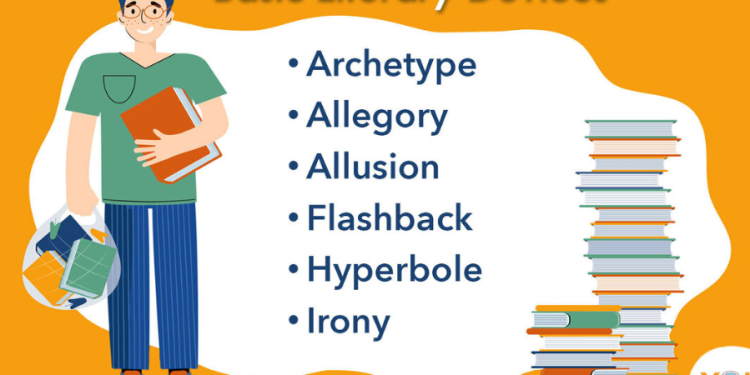Depending on the theme of the book, a literary device can serve a different purpose. There are several types of literary devices, such as the alliteration, the personification, and the symbolism. These can be very effective in the story, but they should be used correctly.
Foreshadowing
Whether you are writing a novel, short story, or play, foreshadowing is a literary device that helps you add tension and suspense to your story. In addition to helping you to draw readers in, foreshadowing can also give you a clearer picture of how your story will unfold. The more you know about foreshadowing, the better your writing will be.
The best foreshadowing is often the most subtle. It is important to keep in mind that too much foreshadowing can take the fun out of your story. It can be a difficult task to determine exactly how much foreshadowing your story needs.
Personification
Using personification in literary devices can create vivid descriptions and deepen the meaning of a story. This figurative language is used to describe concepts, objects and ideas, as well as provide a more human perspective on the world around us.
In addition, this technique is also often referred to as the anthropomorphism of the figurative language. People assign human characteristics to non-human objects, such as animals, plants, and forces of nature. The use of personification is often a great way to bring inanimate objects to life.
It can also be used to set the stage for a story. For example, it can help establish the setting of a horror story.
Alliteration
Using alliteration in literary devices can create a unique reading experience. It also makes the words more memorable. It can be used in a variety of ways, including in poetry, speeches, songs, and other forms of writing.
Alliteration can be useful in both poetry and prose. In poetry, it is used to enhance the rhythm of the poem. The repeated sounds force the audience to focus on the subject. It can also help to create a mood. In a speech, it is often used to make a point or emphasize a particular idea.
Symbolism
Symbolism in literary devices is a form of imagery that is used to add a deeper meaning to a story. It can help readers to better understand the text and the characters. It also can give the reader an emotional response. This can have a long-lasting effect on the reader.
There are many different types of symbols. Some examples include colour, animal, situation and object. You can also use other literary devices, such as setting and word choice. The main aim of using symbols is to enhance your writing.
A common symbol in literature is the color green. The colour is usually associated with materialism, money, jealousy and more. It can also symbolize new life.
Anaphora
Whether you are writing a poem, a short story, or a novel, anaphora literary devices can help you create a compelling, evocative, and memorable piece. This rhetorical device is a simple, yet powerful, way to convey your message. You can use anaphoras to emphasize important words or ideas, add rhythm, and enhance your audience’s experience.
Anaphora is a type of literary device that is used to express emotions. Writers sometimes use anaphoras to appeal to their audience’s sense of memory, emotion, or motivation. It’s a powerful technique to add a lyrical effect and to create a sense of urgency, but can also appear overused or even obtrusive.
Isocolon
Using an isocolon in a paragraph can produce pleasing rhythyms. It also helps the reader get to the point, and maintains consistency. The trick is to use one when the opportunity arises, rather than trying to cram it all into the last word or two. The result is a more elegant and readable sentence.
An isocolon is a rhetorical device that is used to create an equal distribution of words. In the context of rhetoric, this is a useful and logical device to utilize when it is available. In fact, the isocolon is so ubiquitous that it can be found in almost any genre of literature.
Juxtaposition
Using literary devices to highlight and illustrate a character or a scene can be a powerful way to help readers understand a character’s character or to bring a plot to life. In addition to bringing together seemingly disparate ideas, juxtaposition can be used to further a specific mood or atmosphere.
A famous example of this technique is in the opening paragraph of A Tale of Two Cities by Charles Dickens. In this passage, the author compares the experiences of different people during different time periods. He contrasts the affluent life of one character with the poverty of another, and he uses this to demonstrate the differences in society during the time before the French Revolution.






